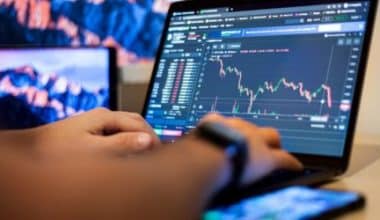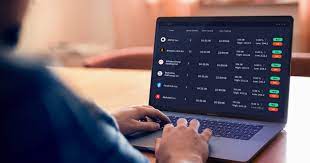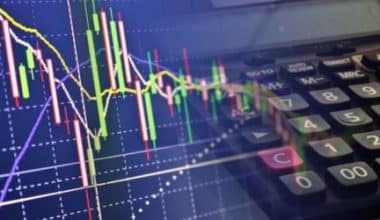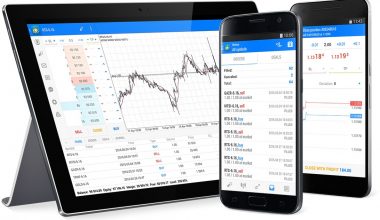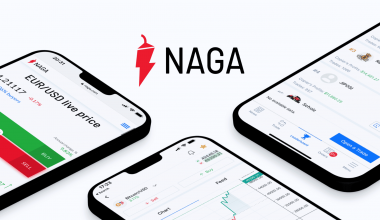Forex trading is one of the leading trends in today’s economy. And while it may seem like a hard nut to crack, trading in forex is not that complicated. With the right tools and information, you’ll be well on your way to upscaling in the industry. Alternatively, you can collaborate with forex brokers via www.mundo-forex.com/en/ for a hassle-free trading experience.
First off, what do you need to know about forex trading and how to start out as a beginner? Here’s all you need to know
What is Forex Trading?
Forex trading is the process of speculating on currency price movements with the purpose of making profit. Many currency changes on the forex market are for practical purposes rather than for profit. Traders, on the other hand, might speculate on forex market price movements in order to profit from properly forecasting these movements.
Examples Of Forex Trading
When you trade in the forex market, you are trading the strength of one currency against another. For example, if you go long and ‘purchase’ USD/GBP, you are assuming that the value of the US dollar will rise relative to the value of the pound. Alternatively, if you go short and’sell’ EUR/AUD, you are speculating that the euro will fall in value relative to the Australian dollar.
The Basics Of Forex Trading
As a beginner, It is important for you to understand the fundamentals of the forex market. These fundamentals will improve your grasp of the major features of the foreign exchange market, allowing you to make more informed currency trading decisions. Here are some things to note:
The forex market
Forex, sometimes known as foreign exchange or just FX, is a currency exchange market where businesses, institutions, people, and governments can trade their currencies. It is the world’s most busy trading market, with over $5 trillion exchanged per day on average. Currency pairs are frequently divided into major, minor, and exotic (or emerging) currency pairs when traded on the foreign exchange market.
The US dollar is the world’s most popular currency, accounting for roughly 60% of all central bank foreign exchange reserves. As a result, it’s not surprising that the US dollar appears in many of the’majors’ (major currency pairs), which account for 75% of all forex market trades. As a beginner, it may be a good idea to trade the majors because they are the most liquid and least volatile currency pairs.
Forex Leverage
You use leverage when trading forex with a spread betting or CFD trading account. This means that you simply need a percentage of the whole transaction value to open a position, which is referred to as trading on margin. However, your market exposure will be determined by the position’s entire trade value. When trading with leverage, both gains and losses are increased.
Forex Trading Strategies For Beginners
As a beginner, you can use a forex demo account to try different forex methods and determine their relative success rate and fit. You may also want to experiment with and select your preferred technical indications for entry and exit positions, as well as combine elements from several techniques.Some common forex trading strategies include:
#1. Forex Scalping
This is the practice of holding many short-term trades and profiting from modest but frequent profitable trades. This method may suit traders who can devote a significant percentage of their time to trading and are more focused on technical analysis.
#2. Forex Day Trading
Forex day trading is for traders who want to avoid overnight holding charges and enter and exit at least one trade each day by predicting daily market moves. This trading approach may be appropriate for traders who aren’t comfortable with scalping’s highly fast-paced trading methods but still want shorter-term trading methods.
#3. Swing trading
Swing trading forex may suit traders who want a balance of fundamental and technical analysis. Positions are open for several days with the goal of buying at’swing lows’ and selling at’swing highs’, or vice versa if going short. This strategy spends less time analyzing market patterns than others, therefore there will be overnight holding expenses and a greater likelihood of the market ‘gapping’.
#4. Position trading
This entails holding positions for lengthy periods of time while ignoring short-term price swings. Position trading may be best suited to traders who spend more time learning about market fundamentals and less time doing technical analysis or trading.
How Do You Trade?
#1. Understand the market
Understand the markets for both currencies that you are trading as part of a currency pair. Know the major macro-environmental influences that may have an impact on the markets to which you are exposed.
#2. Decide and stick to your trading plan
Sticking to your trading plan will help you remove emotion from your transactions and predetermine your entry and exit methods. This method of trading markets is systematic, which can help to keep trades consistent and emotions at bay.
#3. Test, evaluate, and try again
Trading is all about evaluating each trade to see what worked and what didn’t. As a new trader, you will need time to establish a sound trading attitude and recognize that your trading psychology is a work in progress.
#4. “Cut your losses and let your profits run.”
This mindset will help you in your trading journey. Don’t be tempted to take a profit as soon as it emerges, and don’t be afraid of losing money. To remove emotion from your trading, stick to your trading plan and establish risk-management conditions.
#5. Choose the ideal trading platform for you
A dependable trading platform, responsive customer support, and stable spreads are all significant elements in determining your overall trading experience. You can visit www.mundo-forex.com/en/ to choose the best trading platform for you.
Where To Trade Forex
You can trade forex using a spread betting or CFD trading account on a desktop or mobile device. Aside from forex, you can trade thousands of financial products such as indices, cryptocurrencies, commodities, stocks, ETFs, and treasuries.
In Conclusion,
Learning how to trade forex is a broad topic, but we have highlighted the basics here. When you become conversant with the basics, we recommend you start out with a demo account. With it, you can try forex tactics and suggestions and begin to develop a trading strategy to follow. Once you’re comfortable with a strategy, including risk management, and are familiar with the trading interface, you can establish a live account to trade forex for real money.

